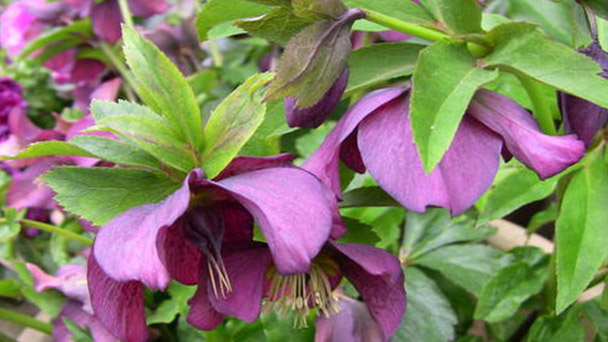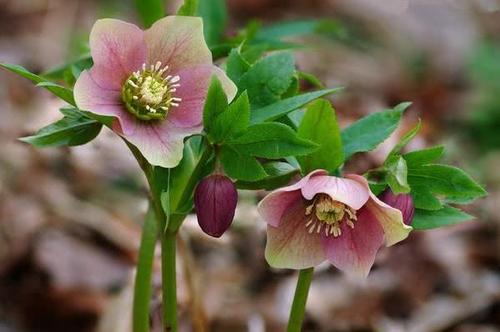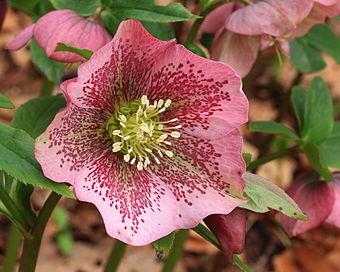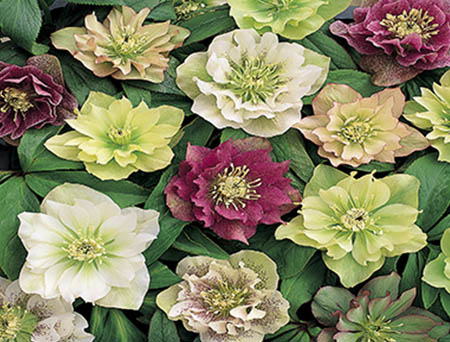The breeding methods and precautions of Helleborus
Written by Maggie
Nov 20 2020

In the process of Helleborus cultivation, it is best to use a mixture of sandy soil, leaf rot soil, sawdust and decayed organic fertilizer to make culture soil. During the growth and development, the plants should be placed in the semi-shade. In autumn and winter, the plants should be exposed to more sunlight, and the principle of drying and wet watering should be maintained.
Helleborus picture
Helleborus farming method
1. Alkaline soil
Helleborus has a high requirement on the soil, in the sandy soil moist fertile and rich in nutrients to grow more appropriately, mainly composed of micro alkaline soil. We can choose wood shavings, rotten leaves of organic fertilizer, sand, and mixed stirring, after changing basins in the late spring or autumn, which is good for the growth of the root system.
2. Plenty of sunshine
Helleborus want to grow in sunny and warm environment, cold resistance is very strong, mainly accept astigmatism during growth and development, during the spring and summer when you need to put half overcast environment of plant maintenance, qiu dong season all can let the plant under the sun more sun, but must carry on the spray cooling process at high temperature in summer, so as to avoid sunburn.
3. Water and fertilizer management
Water and fertilizer management is one of the cultivation methods and matters needing attention for Helleborus. When potted Helleborus, it is advisable to keep the pot soil moist frequently, but no water should be accumulated. Water should be kept dry and wet, and the amount of water should be reduced in cool weather, and the soil should be loose after watering.

Matters needing to be paid attention for Helleborus cultivation
1. Disease and insect prevention
During the growth period, Helleborus can often see aphids or black spots and other harm. After the onset, there will be many spots on the leaves, which will gradually become black and wither. It is better to pay attention to ventilation in the early stage, and spray diluted soap solution or oxidized dimethoate solution once a week until the improvement.
2. Change basins
The root system of Helleborus grows fast, so it is best to change the pot at the end of spring every year. After all the dead branches and diseased and insect branches are cut off, the rotten roots and dead roots above should be cut off, and some bone powder should be put in the bottom of the pot, and then replanted for curing, so as to promote the healthy growth of the root system.

Latest Updated
- Benefits of Bugleweed - 7 Science-backed Health Benefits
- Bugleweed Dangers & Side Effects - Is It Poisonous?
- How to Plant Evergreen Trees - What You Should Know
- When to Plant Evergreens - Grow Guide for Evergreen Trees
- 12 Wonderful Evergreen Shrubs for Your Garden
- 12 Popular Evergreen Plants with Pictures for Beginners
- When And How To Prune A Lilac Bush Like a Pro
- How to Grow & Care for Lilac Vine (Hardenbergia Violacea)
- Japanese Lilac Tree (Syringa Reticulata) Care & Propagation Guide
- Shumard Oak Pros and Cons - What to Know
Popular Articles
- Winter maintenance of Antirrhinum Majus
- How to Grow Terminalia Mantaly Tree
- How to Grow and Care for Crossostephium Chinense
- How to grow Antirrhinum Majus in spring
- Peristeria Elata (Dove Orchid) Profile: Info & Care Guide
- Underwatered Snake Plant (Sansevieria Trifasciata) - Signs And How To Fix
- How to Care for Brazilian Jasmine Plant (Mandevilla Sanderi)
- How to Grow & Care for Graptopetalum Purple Delight in Summer
- Rosa Chinensis (China Rose): Plant Growing & Care Tips
- How to Care for Baby Sun Rose (Aptenia Cordifolia)
